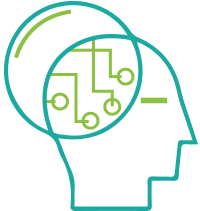Observation is one of the core functions built into xapiapps and we spend a lot of time thinking, talking and applying observational technology in our training solutions. What we don’t often do is stop to articulate why observation matters so much.
The truth is that the pace with which old skills become obsolete and new skills come into existence is accelerating. Entire new job categories spring up seemingly overnight and the very model of work is changing into something different from what we’ve known. This means that the emphasis on continuous and effective training is greater than ever. It’s in that context that the importance of observational technology becomes crystal clear.
The Problem with Industrial Learning

The way most training and education has been executed for centuries involves one-to-many instruction, with very limited two-way feedback. In other words, instruction is given in a setting where trainees are treated as more-or-less identical.
In a real sense the trainer is just throwing knowledge at the class and hoping some of it sticks. Which we then try to measure with infrequent assessments.
There’s little chance to check in with each individual student and get a good idea of how well they are retaining or applying their learning. It’s sad, given that things haven’t always been this way. The demand for high numbers of trained people has driven us to this suboptimal compromise.
The Good Old Days

Before we needed to produce skilled people by the thousands, the approach to training was very different. People would become apprentices under skilled professionals and train with them. Under the eye of a master the specific weaknesses and strengths of the apprentice would become apparent. The training path each apprentice is given differs based on the results of this tight master-apprentice feedback loop.
This is a rich and quality-focused approach to training and transferring skills. Absolutely not the sort of thing you can do in a cost effective way when trying to keep up with the demand for trained employees!
Up Close and Personal

As you’ve probably figured out, one of the key issues is the fact that we can’t scale our training masters to match the number of prospective apprentices. There just aren’t enough watchful eyes to reproduce that quality-focused training approach at scale.
That is, until the advent of modern information technology and the mobile device revolution. As technological developments such as Big Data, mobile apps, learning analytics and more start to mature we’re empowered to examine large numbers of people at highly-individualized levels of detail.
Adding Up Marginal Gains

The concept of “marginal gains” tells us that it’s easier to get a 10% improvement if you improve ten things by 1% than if you try to gain 10% in just one place.
Globally we’re seeing a shift to technology coupled with sophisticated analytics. Organizations are realizing the power of technology-powered observation and how it can be applied.We believe that technologically-supported observation is exactly the sort of solution that provides dramatic improvements by enhancing a broad range of outcomes in small ways. It all adds up in a way that you can measure at an organizational level.
The Human Touch - Through Technology

In the end, the point of using technology for advanced, granular and mass-customized observation is not to turn training into a more impersonal process. It’s the opposite goal that motivated us to to work so long and hard on turning xapiapps into a viable product. We want to re-humanize the art of training. To stop treating trainees as a faceless crowd and bring back the keen oversight and attention to detail which exists in the master-apprentice model. If we can succeed in that, there are literally only winners on all sides of the process.
At the same time we want to enable organizations to keep up with the staggering pace of skills turnover without industrializing the training process even further. It seems like a tall order, but with xapiapps and a good dose of lateral thinking it can be done.
That’s why we care so much about observation.

 Log in
Log in







Comments